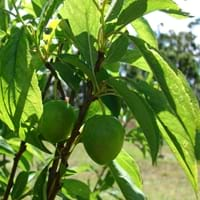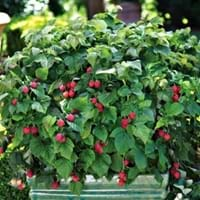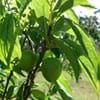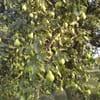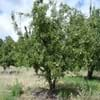Life Span
Perennial
Perennial
Origin
China
Hybrid origin
Types
Prunus domestica
not available
Number of Varieties
Not Available
Habitat
Forest margins, Forests, Mountains, Scrubs, Valley
disturbed sites, Forest edges, old gardens, Riverbanks, Roadsides
USDA Hardiness Zone
6-10
4-9
Sunset Zone
H1, 2a, 2b, 3a, 3b, 4, 5, 6, 7, 8, 9, 10, 11, 12, 14, 15, 16, 17, 18, 19, 20, 21, 22, 23, 24
A1, A2, A3, 1a, 1b, 2a, 2b, 3a, 3b, 4, 5, 6, 7, 8, 9, 10, 11, 12, 13, 14, 15, 16, 17, 18, 19, 20, 21, 22, 23, 24
Habit
Oval or Rounded
Upright/Erect
Flower Color Modifier
Bicolor
Bicolor
Fruit Color
Yellow, Red, Blue, Green, Purple
Red
Leaf Color in Spring
Green
Green
Leaf Color in Summer
Green
Green
Leaf Color in Fall
Green
Green
Leaf Color in Winter
Light Green
Light Green
Leaf Shape
Ovate
Spade shaped
Plant Season
Spring, Summer, Winter
Spring, Summer, Fall
Sunlight
Full Sun
Full Sun, Partial Sun
Type of Soil
Loam
Loam, Sand
The pH of Soil
Acidic, Neutral
Acidic, Neutral
Soil Drainage
Well drained
Well drained
Bloom Time
Early Spring, Late Winter
Spring, Summer
Tolerances
Drought
Drought
Where to Plant?
Ground
Container, Ground, Pot
How to Plant?
Seedlings, stem tip cuttings
Seedlings, Stem Planting, Transplanting
Plant Maintenance
Medium
Medium
Watering Requirements
Average Water Needs, Do not water frequently
Do Not over Water, Keep ground moist
In Summer
Lots of watering
Lots of watering
In Spring
Moderate
Moderate
In Winter
Average Water
Average Water
Soil pH
Acidic, Neutral
Acidic, Neutral
Soil Type
Loam
Loam, Sand
Soil Drainage Capacity
Well drained
Well drained
Sun Exposure
Full Sun
Full Sun, Partial Sun
Pruning
Remove damaged leaves, Remove dead branches, Remove dead leaves
Remove damaged leaves, Remove dead branches, Remove dead leaves
Fertilizers
All-Purpose Liquid Fertilizer, Apply N-P-K
All-Purpose Liquid Fertilizer
Pests and Diseases
Caterpillars, Crown gall, Peach Leaf Curl, Red blotch, Sap-Sucking Insects
Red blotch
Plant Tolerance
Drought
Drought
Flowers
Showy
Insignificant
Flower Petal Number
Single
Single
Foliage Texture
Medium
Medium
Foliage Sheen
Glossy
Matte
Attracts
Birds
Butterflies
Aesthetic Uses
Bonsai, Borders
Showy Purposes
Beauty Benefits
Not Available
Good for skin
Environmental Uses
Air purification
Not Available
Medicinal Uses
Not Available
Sore throat, Ulcers, Wounds
Part of Plant Used
Fruits, Seeds
Fruits
Other Uses
Traditional medicine, Used as a dye
Edible syrup, Used As Food, Used as Ornamental plant
Used As Indoor Plant
No
No
Used As Outdoor Plant
Yes
Yes
Garden Design
Fruit / Fruit Tree, Topiary / Bonsai / Espalier
Edible, Fruit / Fruit Tree, Hedges
Botanical Name
PRUNUS salicina
RUBUS 'Amity'
Common Name
Japanese Plum
Amity Raspberry, Raspberry
In Hindi
Japanese Plum
Raspberry
In German
japanische Pflaumen
Himbeere
In French
prune japonaise
Framboise
In Spanish
ciruelo japonés
Frambuesa
In Greek
Ιαπωνικά Plum
Βατόμουρο
In Portuguese
ameixa japonesa
Framboesa
In Polish
japoński Plum
Malina
In Latin
Plum Italica
RUBUS IDAEUS
Phylum
Tracheophyta
Anthophyta
Class
Magnoliopsida
Eudicotyledones
Order
Aquifoliales
Rosales
Clade
Angiosperms, Eudicots, Rosids
Not Available
Tribe
Not Available
Not Available
Subfamily
Not Available
Not Available
Number of Species
Not Available
Season and Care of Japanese Plum and Raspberry
Season and care of Japanese Plum and Raspberry is important to know. While considering everything about Japanese Plum and Raspberry Care, growing season is an essential factor. Japanese Plum season is Spring, Summer and Winter and Raspberry season is Spring, Summer and Winter. The type of soil for Japanese Plum is Loam and for Raspberry is Loam, Sand while the PH of soil for Japanese Plum is Acidic, Neutral and for Raspberry is Acidic, Neutral.
Japanese Plum and Raspberry Physical Information
Japanese Plum and Raspberry physical information is very important for comparison. Japanese Plum height is 300.00 cm and width 300.00 cm whereas Raspberry height is 120.00 cm and width 120.00 cm. The color specification of Japanese Plum and Raspberry are as follows:
Japanese Plum flower color: White
Japanese Plum leaf color: Green
Raspberry flower color: White
- Raspberry leaf color: Green
Care of Japanese Plum and Raspberry
Care of Japanese Plum and Raspberry include pruning, fertilizers, watering etc. Japanese Plum pruning is done Remove damaged leaves, Remove dead branches and Remove dead leaves and Raspberry pruning is done Remove damaged leaves, Remove dead branches and Remove dead leaves. In summer Japanese Plum needs Lots of watering and in winter, it needs Average Water. Whereas, in summer Raspberry needs Lots of watering and in winter, it needs Average Water.
